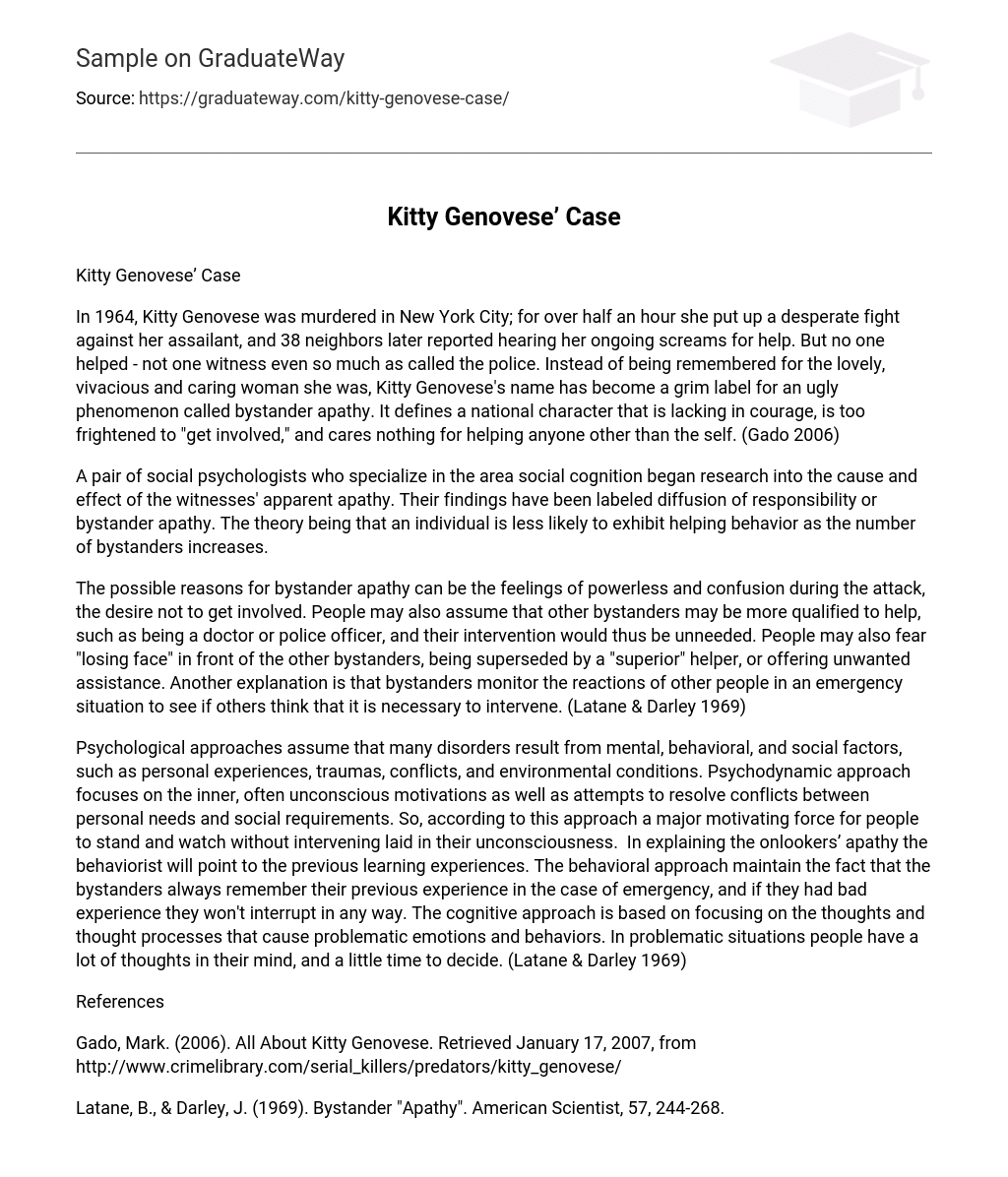In 1964, Kitty Genovese was murdered in New York City; for over half an hour she put up a desperate fight against her assailant, and 38 neighbors later reported hearing her ongoing screams for help. But no one helped – not one witness even so much as called the police. Instead of being remembered for the lovely, vivacious and caring woman she was, Kitty Genovese’s name has become a grim label for an ugly phenomenon called bystander apathy. It defines a national character that is lacking in courage, is too frightened to “get involved,” and cares nothing for helping anyone other than the self. (Gado 2006)
A pair of social psychologists who specialize in the area social cognition began research into the cause and effect of the witnesses’ apparent apathy. Their findings have been labeled diffusion of responsibility or bystander apathy. The theory being that an individual is less likely to exhibit helping behavior as the number of bystanders increases.
The possible reasons for bystander apathy can be the feelings of powerless and confusion during the attack, the desire not to get involved. People may also assume that other bystanders may be more qualified to help, such as being a doctor or police officer, and their intervention would thus be unneeded. People may also fear “losing face” in front of the other bystanders, being superseded by a “superior” helper, or offering unwanted assistance. Another explanation is that bystanders monitor the reactions of other people in an emergency situation to see if others think that it is necessary to intervene. (Latane & Darley 1969)
Psychological approaches assume that many disorders result from mental, behavioral, and social factors, such as personal experiences, traumas, conflicts, and environmental conditions. Psychodynamic approach focuses on the inner, often unconscious motivations as well as attempts to resolve conflicts between personal needs and social requirements. So, according to this approach a major motivating force for people to stand and watch without intervening laid in their unconsciousness. In explaining the onlookers’ apathy the behaviorist will point to the previous learning experiences. The behavioral approach maintain the fact that the bystanders always remember their previous experience in the case of emergency, and if they had bad experience they won’t interrupt in any way. The cognitive approach is based on focusing on the thoughts and thought processes that cause problematic emotions and behaviors. In problematic situations people have a lot of thoughts in their mind, and a little time to decide. (Latane ; Darley 1969)
References
Gado, Mark. (2006). All About Kitty Genovese. Retrieved January 17, 2007, from http://www.crimelibrary.com/serial_killers/predators/kitty_genovese/
Latane, B., ; Darley, J. (1969). Bystander “Apathy”. American Scientist, 57, 244-268.





